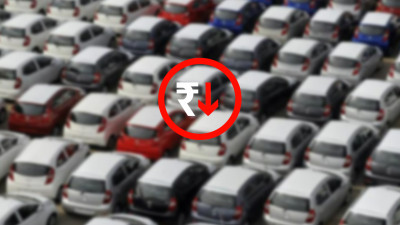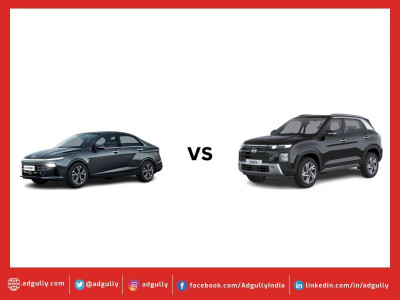Amid gloom, auto sector expects a revival during forthcoming festive season
The slowdown in the economy has been cause for growing concerns. One of the sectors that has borne the brunt of the slowdown has been the auto sector. As per media reports, sales of two-wheelers as well as four-wheelers fell by almost half in August 2019, compared to the corresponding month in 2018. Auto manufacturers have attributed this downturn mostly to poor consumer sentiments.
The Government is trying to correct the course of slowdown in the economy by announcing a slew of relaxations. In a bid to give respite to the auto sector, the Government has agreed to postpone a proposed increase in registration fee for passenger vehicles to June 2020. With the easing of rules for the validity of registration under the BS IV standards after the implementation of the BS VI standards, BS IV vehicles sold up to March 2020 will remain operational for their entire registration period.
The banks have not been lending to the Non-Banking Financial Companies (NBFC), who, in turn, were not lending money for buying high value goods such as Scooters/ Motorbikes/ Washing machines, etc. The NBFCs reportedly account for the financing of around 55 per cent of commercial vehicles, both new and used, 30 per cent of passenger cars and nearly 65 per cent of the two-wheelers in the country. This scenario has been corrected by the Government by pumping in more money into the banking system and the banks, in turn, can now lend money to the NBFCs.
Another major trend has been the influx of online marketplaces for buying and selling new and used automobiles, companies like OLX and Cars24 are the leaders in this segment. The market of pre-owned vehicles is on the rise, especially since the past 5 years. This reflects rising consumer interest in this segment, directly impacting the new vehicle demand.
The Finance Minister also recently announced that the dealer finance and customer finance costs will get reduced and that will be a major factor in bringing down the cost of vehicles.
A revival round the corner
The media has been full of reports regarding the dire situation in the auto sector. However, statistics show otherwise. As per Society of Indian Automobile Manufacturers (SIAM), the statistics show a revival in the auto sector.
Production: The industry produced a total 30,915,420 vehicles, including passenger vehicles, commercial vehicles, three-wheelers, two-wheelers and quadri-cycles in April-March 2019 as against 29,094,447 in April-March 2018, registering a growth of 6.26 per cent over the same period last year.
Domestic Sale: The sale of passenger vehicles grew by 2.70 per cent in April-March 2019 over the same period last year. Within passenger vehicles, the sales of Passenger Cars, Utility Vehicles & Vans grew by 2.05 per cent, 2.08 per cent and 13.10 per cent, respectively, in April-March 2019 over the same period last year.
Two-wheeler sales registered a growth at 4.86 per cent in April-March 2019 over April-March 2018. Within the Two-Wheelers segment, Scooters declined by (-) 0.27 per cent, whereas Motorcycles and Mopeds grew by 7.76 per cent and 2.41 per cent, respectively, in April-March 2019 over April-March 2018.
Adgully spoke to a cross-section of industry experts and auto industry leaders to gauge the growth (and degrowth) in India’s auto sectors, the sentiments for the forthcoming festive season as well as revival in the sector.
Sales/ Spends/ Revenues expected during the festive season
Automobile manufacturing companies are betting big this festival season to entice customers to showrooms during the festive season at a time when vehicle sales are languishing.
Taking a realistic view, Hardeep Singh Brar, Director – Sales & Commercial, Nissan India, commented, “The festive season has always been important, but the tough times that the Indian auto industry is facing have made this year’s festivities even more crucial to uplift the sentiments. We are expecting that the above average monsoons before the festival period should be able to give some respite to the industry. We have quite a few initiatives planned in the next few months, both for Nissan and Datsun. The focus is more on regional and aligned with local market nuances – for example, in the South Chingam-Onam, Ganesh Chaturthi, Navratra, Dussehra, Durga Pooja and Diwali across different regions.”
He pointed out that during these auspicious days, customers look for lucrative deals and better financing options. Additional to the exciting offers, Nissan India will bridge the financing gap for its customers with its in-house financing solution – Nissan Financial Services. The company is also working with banks at regional levels to work out best possible options for its customers.
On a more optimistic note, a Tata Motors spokesperson said, “We are hopeful of an imminent revival in the sales of passenger vehicles on account of a potent demand generally seen during the festive season as well as due to the measures announced by the Finance Minister last week. Additionally, we aim to boost customer morale with several festive offers and special festive editions, in the months to come.”
As a third party industry observer, Aliasgar Banatwala, Media Director, Digitas India, commented, “The ad spends are going to see an increase with new players like Kia and MG entering the sector. Along with that, other leading players in the market are also launching new vehicles. It is pretty clear that automobile makers are betting big to draw people to the showrooms. Historically, one-third of the automobile sales have happened during the festive season. Looks like marketers are expecting this trend to continue this year as well.”
Meanwhile, throwing light on the market realities, Sabyasachi Mitter, Founder & MD, Fulcro, said, “The slowdown in the auto industry is a reality. One of our clients, a leading auto brand, is reporting a 30 per cent drop in demand. It is to be noted, however, that most auto brands are reporting drop in dealership offtake as the measure and not retail sales. Here is where it gets interesting. With BSVI around the corner and a degree of uncertainty in the minds of consumers about whether to buy a car before April 1, 2020 or not, the slowdown in part could be a function of waiting for the next year, with dealers not wanting to maintain the regulars stock levels. We have seen ads from certain dealerships trying to clear BSIV stocks in recent days.”
Mitter further noted that the recent Government policies have a potential to help fuel a partial recovery with greater depreciation for corporates and festive schemes can further add to that impetus. However, it is a Catch 22 situation – there is only so much that can be thrown in as a discount while there is only so long you can live with unsold inventory. “I do believe that the slowdown has bottomed out and a recovery is on the cards from these levels, however we have to see through what I believe is a cyclical and situational aberration before the sector can truly go back to its glory days,” he added.
Government’s course-correction measures
Welcoming the comprehensive set of actions laid out by the Government, the Tata Motors spokesperson believed that the measures to improve liquidity, drive growth and reduce cost of ownership of the vehicles would help the industry get back on track. “We thank the Government for hearing the concerns of the industry empathetically and doing their best under current conditions,” he added.
Pointing out at an ironical situation, a senior industry source who did not want to be named, said that despite reports of a slowdown in the auto sector, SUVs launched by various companies are being booked and there is even a wait of 6 months!
He, too, felt that the stimulus by the Government to the auto industry would help. “Earlier, there was a cap on buying of new vehicles, for example, a vehicle 10 years old was to be replaced. Now, this has been lifted, which opens up the market and sales will go up,” he said.
Continuing further, the senior source said, “Given the good monsoons, tractor sales are expected to go up. Moreover, a special depreciation to corporates has also been announced. If a corporate house buys 10 vehicles, they will get 30 per cent depreciation now as compared to 15 per cent earlier. The taxation outflow will be less, and this will motivate them to buy. I am very optimistic and gung-ho about the auto sector.”
Madison Digital’s Vishal Chinchankar, too, believed that the comprehensive set of actions laid out by the Government would help improve liquidity, reduce cost of ownership and should drive growth and help the auto industry to get back on track.
Historically, festivals are not only about having a good time, but are also auspicious periods during which new ventures are started or expensive purchases made. And cars often figure at the top of a buyer’s list. It’s no wonder then that the arrival of festive seasons is marked by offers and discounts. Also, the clarification that customers can buy BS IV vehicles until March-end 2020 should clear doubts and trigger the demand for vehicles and auto manufacturers may roll out attractive offers supplemented with adex spends to manage the inventory during this festive period. “Importantly, we have seen 5 new car launches in the last 10 days, which should kickstart a recovery in new vehicle sales, and this, supplemented with the Government measures, should help boost industry confidence, adex spends and eventually sales,” Chinhalkar asserted.
However, not everyone shares these positive sentiments. There are some industry experts who are more cautious in their comments.
Banatwala of Digitas India said, “Honestly, I do not think these measures are going to boost sales drastically. The measures aren’t focused on the consumer. The need of the hour is to regulate GST/Cess charges if the sector is to see any amount of boost in sales.”
According to Anand Chakravarthy, Managing Director, Essence, “The recent measures taken by the Finance Minister may not have an immediate effect on the auto industry, but will help in shifting the momentum on a growth path again. For the auto industry, as for many other categories, the festive season is key from a sales perspective and auto brands will spend and ensure sufficient investments to maximise the opportunity in the 6-8 weeks of the festive season. We are already seeing auto advertising visible across mediums, and while potentially lower than last year, will still be a substantial contributor to the overall festive season spends.”
Meanwhile, auto manufacturers are prepared to ride the storm. As Nissan India’s Brar said, “We have recently launched the sub-Rs 10 lakh variant of the all new Kicks to cater to the demand at that price point. We shall also be launching the new GO and GO Plus CVT to cater to the growing demand for the automatic cars during this festival. All in all, we are all geared up for the festivities ahead.”






















Share
Facebook
YouTube
Tweet
Twitter
LinkedIn